Once a seemingly promising structure to ensure that real estate groups don’t run roughshod over local neighborhoods in development deals—and still a common practice in other cities—CBAs are now disdained by many New York City community groups and developers alike. The mechanism’s demise is a lesson, development experts say, in both the strength and limitations of demanding concessions in exchange for neighborhood-changing construction projects.
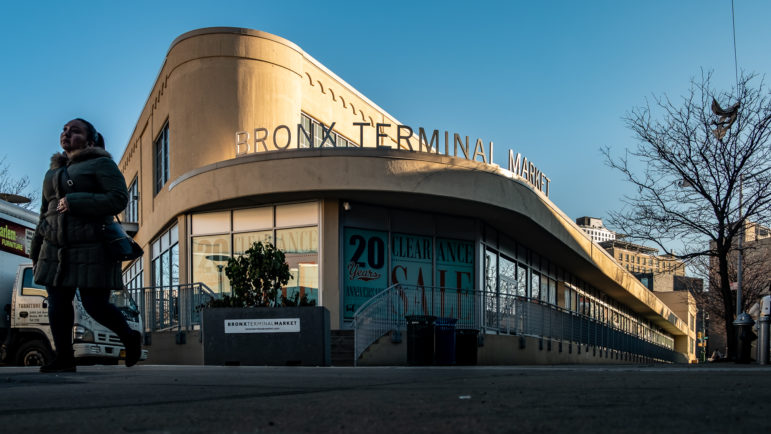
Adi Talwar
The southern end of Bronx Terminal Market.In the winter of 2006, the mood among Bronx elected officials was of hard-fought accomplishment. Along with representatives of Bronx community groups and developers the Related Companies, borough politicians had just finished hashing out a deal for the planned overhaul of the Bronx Terminal Market—a warren of wholesale fruit and vegetable vendors that dated back to Fiorello LaGuardia’s artichoke wars of the 1930s—into a modern mall.
At the centerpiece of the agreement was to be the city’s first community benefits agreement (CBA), guaranteeing that the developer would share the wealth with local residents.
“We got more concessions than mostly any other CBA in the United States of America,” then-Bronx Councilmember Joel Rivera said of the agreement, in which Related promised to set goals for local hiring and provide $3 million for local business development and job training. “It is never perfect, but it is pretty darn close to it.”
In retrospect, this may have been overly optimistic.
The Bronx Terminal Market CBA was beset from the start by charges that it served the community in name only. Advocates for the to-be-displaced produce vendors complained that Bronx Borough President Adolfo Carrion had “handpicked” the community groups involved in the talks, that he’d excluded any who raised objections, and that the final deal was only signed by four groups, three of which were controlled by government officials. To them, the $3 million was less a win for the community than a fig leaf for Related owner Stephen Ross, who was getting access to valuable property for the price of a few job-training programs.
“I can’t think of one item that came out of that Bronx Terminal Market community benefit agreement,” says Mary Blassingame, who at the time was chair of the land use committee for Bronx Community Board 4, and who fruitlessly argued that Related should be forced to arrange for new homes for the ousted vendors. “Nothing we asked for we won.”
“This was like one of those situations where this tool that had been developed for community organizers was sort of co-opted by elected officials,” says Gavin Kearney, who attended the Bronx Terminal Market CBA negotiations as a representative of New York Lawyers for the Public interest.
The Bronx Terminal Market agreement not only changed the face of the South Bronx—the market was soon demolished, its fruit and vegetable vendors scattered to the winds and replaced by such stores as Target and Best Buy—but also briefly ushered in an era of CBAs as a required puzzle piece for those seeking to carry out major developments in New York City. Over the next few years, several New York developers, including the likes of the New York Yankees and Columbia University, incorporated community benefits packages into their plans for mammoth redevelopment deals, as advocates for the tactic argued that it would finally allow local residents a seat at the table to negotiate the future of their neighborhoods.
Since 2009, though, community benefits deals have largely dropped off the radar in New York City, with some exceptions (local organizers, for instance, are pushing for one in relation to a developer’s proposal to rezone Brooklyn’s Broadway Junction.) Once a seemingly promising structure to ensure that real estate groups don’t run roughshod over local neighborhoods in development deals—and still a common practice in other cities—CBAs are now disdained by many New York City community groups and developers alike. And while similar side deals have sometimes been struck by city officials in more recent development and planning negotiations, like the Bedford Union Armory redevelopment in Crown Heights and the East New York rezoning, those agreements, like earlier CBAs, have been criticized for the same kinds of broken promises.
The mechanism’s demise is a lesson, development experts say, in both the strength and the limitations of demanding concessions such as wage guarantees and local amenities in exchange for neighborhood-changing construction projects. Withholding community support may be a potentially powerful weapon, but it all depends on who gets to define themselves as the community.
Developer-driven?
The ur-CBA, the one that started them all, began to take shape in Los Angeles in 2001, when labor and community groups learned of a $150 million subsidy the city was considering for new development around the Staples Center arena. They formed the Figueroa Corridor Coalition for Economic Justice, which demanded—and won—a series of concessions from the developer that included $1 million for local parks, wage and local hiring standards, additional affordable housing, and the right to consult on which commercial tenants would be granted leases in the new construction.
The Staples CBA, as it became known, soon inspired groups in other cities to see what concessions they could win from developers eager to get their hands on public money or public land. CBAs soon spread across California, and to other cities including Atlanta, Boston, Charleston, Chicago, Denver, Milwaukee, Minneapolis/St. Paul, Miami, New Haven, New Orleans, Seattle, and Washington, D.C. As recounted by NYU law professor Vicki Been, who later served as Housing Preservation and Development (HPD) commissioner and deputy mayor under Bill de Blasio, the strength of the new gambit lay in community groups’ ability to get local elected officials to withhold approvals if a developer wouldn’t sit down to talk turkey: “Most are tied to real estate development, and the community groups’ ability to insist on a CBA is based on their power to slow down or block required land use approvals,” Been wrote in a 2010 paper.
Yet in New York, it wasn’t community groups that first introduced the CBA concept. Rather, it was developers looking for a way to head off opposition to neighborhood-changing projects.
The very first CBA in the city was established in June 2005 by Forest City Ratner, the developer then pitching the massive Atlantic Yards project, to include a new Nets basketball arena plus a series of residential and office towers, atop state-owned rail yards in Brooklyn. In it, developer Bruce Ratner promised to create unspecified job-training programs, build an estimated 2,250 units of affordable housing, use “good faith efforts” at local hiring, and “work towards” building a new neighborhood school.
Ratner vowed at an introductory press conference that the CBA was “legally binding,” at which point Mayor Michael Bloomberg, who was standing next to him, interjected, “Even more importantly, you have Bruce Ratner’s word. That should be enough for you and for everybody else in the community.”
However, critics of the project soon noticed that the groups that signed the Atlantic Yards CBA included many that were beyond carefully selected. Of the initial eight “community” signatories, only two existed before talks began; Brooklyn United for Innovative Local Development (BUILD), a job-training nonprofit founded the year that it signed the CBA, was soon revealed to have received money, free office space, and even computer equipment and furniture from Ratner.
The lead negotiator, the Association of Community Organizations for Reform Now (ACORN), would be put in control of the affordable-housing element of the project; BUILD was put in charge of the workforce development programs. Other local groups, meanwhile, had been locked out of CBA talks; when Ratner began touting the involvement of Brooklyn community boards 2, 6, and 8 in helping to craft the agreement, the boards’ chairs issued an open letter asking the developer to “discontinue all mention, in any form, of our participation” given the boards’ “very limited role” in crafting the CBA.
Having mostly untested groups as signatories to the CBA not only raised questions about whether Ratner was simply cherry-picking groups he could buy off, but created problems when it was time to enforce Ratner’s allegedly “legally binding” promises. ACORN dissolved in 2010 amid a funding crisis after two right-wing activists secretly filmed low-level workers making questionable statements; BUILD shut down in 2012. (While Bloomberg publicly signed the Atlantic Yards CBA, he did so only as a “witness,” not as someone with the legal force to challenge it if its provisions failed to come to pass.) Since a CBA is a contract between two parties, not a law, if no signatories are left standing to sue, there’s no way to enforce any of a developer’s commitments.
“I was on a panel with a guy from Forest City Ratner in 2005 or so, right after the agreement,” says John Goldstein, a longtime campaign director for the Partnership for Working Families, who continues to consult on benefits agreements. “From the very beginning it was clear that they were taking the name of community benefits and using it as their Good Housekeeping seal of approval.”
Soon after Ratner announced his Brooklyn agreement, Related began talks for a CBA for its Bronx Terminal Market proposal. The timing was odd: Ross’s company was already in the middle of the city ULURP process for the proposed replacement of the old market buildings, which left little time for substantive talks about neighborhood benefits. Still, Bronx Borough President Adolfo Carrion and members of the Bronx City Council delegation rounded up representatives of local community groups to attend a series of planning sessions to hash out a CBA.
As with Atlantic Yards, the impetus for a CBA in The Bronx came not from the community but from the developer, according to Related’s then-attorney Jesse Masyr. The decision to pursue a benefits agreement, says Masyr, who spearheaded community talks for Related, was an “enlightened developer decision: Realizing we were doing a transformative development in The Bronx, we thought it was a creative way to husband, if you will, community support.”
This husbanding, as it transpired, consisted of working directly with Bronx officials to determine who Related would face off against at a negotiating table.
“Carrion created what he called a CBA task force, and he handpicked who was on it,” says Kearney, who was brought into the talks by Sustainable South Bronx founder Majora Carter. The task force, he recalls, was heavily weighted toward neighborhood groups that had received funding from the borough president’s office or the city-run Bronx Overall Economic Development Corporation; its chair was BOEDC President Ray Salaberrios, and Related community liaison Fernando Brin was a frequent attendee.
Kearney, who hadn’t previously worked on any CBA campaigns, started researching “what these things are supposed to look like,” he recalls. Then he met with some of the task force members, who told him their concerns that the process was not what it should be.
“They were like, ‘It’s very strange, this guy Fernando is in our meetings where we think we’re supposed to be talking about strategy, and we’ll bring up an idea, and he’ll just tell us, “Oh no, you don’t want to ask for that,”‘ he says. “It felt like there’s another conversation happening that we’re not part of.”
Carrion, who resigned as Bronx borough president in 2009 for a three-year stint as an urban affairs and housing official in the Obama administration, contends that the idea for a Bronx Terminal Market CBA was first presented to Related by Bronx electeds, not the other way around.
“We brought it to them,” he says, noting his own background in urban planning dating back to the 1980s, when he worked in the Bronx office of the Department of City Planning. “You’ve got basically an opportunity here for a developer to come in and do a major project—and obviously profit from their investment, which is normal. But at the same time, what do we get in return? That was the big challenge.”
From there, Carrion says, “the devil is in the details.” The task force membership, he says, was developed with input from his office, BOEDC, the local community board, and the Bronx council delegation. “There’s always going to be some organizations or community groups who say ‘We were not included.’ It’s natural—you try to include as much as you can, but it also has to be a manageable working group.”
The weekend before the City Council was set to vote on the mall plan, the task force members finally sat down with Masyr to discuss their demands, and perhaps more important, whether the city would be able to impose fines or injunctions if Related failed to live up to its promises, as was guaranteed in CBAs elsewhere in the country.
“It was just: ‘No. No. No,’” says Kearney. “What became very clear over the course of that weekend was our room was not the room where it was happening, to use the Hamilton phrase.” The real decision-making power, it turned out, was in “another room where it was the Bronx Democratic machine deciding what would or wouldn’t happen.”
Masyr doesn’t argue the point. “It was really more negotiated with the elected officials, particularly the borough president and the council members,” he says. “They picked up what they thought would be the responsible coalition. But most of the hard negotiation was done between the borough president’s office and a couple of the council members.”
The final Bronx Terminal Market CBA included none of the broader demands the community members had sought—such as living wage guarantees, relocation commitments for existing vendors, and a legal framework for enforcing developer promises—instead establishing “goals” for local hiring and a promise to take “commercially reasonable efforts” to use union labor, plus a $3 million fund for local business development, hiring, and job training. Though Related promised to fund relocation expenses for the market’s merchants, this was just a verbal promise, not a formal part of the CBA.
“It was never done,” says Jim Fairbanks, who served on the task force as chief of staff for Bronx Councilmember Helen Diane Foster. “They were just, in the end, abandoned to go find their own way.”
Since none of the groups on the task force would sign it, the “community” signatories ended up being just four groups: the BOEDC, the New Bronx Chamber of Commerce, Mount Hope Housing Company, and Hostos Community College—two of which were government-controlled entities. (Of the four, only the Bronx chamber replied to requests for comment for this story; President Lisa Sorin, who was hired by the chamber in 2018, says she has no records of how or when the organization was brought into the CBA process as signatory, though she does say such agreements can be important for providing a “level of accountability” for corporate developers.)
“None of those people were involved in negotiations,” says Kearney. “Those were just people who had relationships with the Bronx Dems or with the borough president’s office that were like, ‘Hey, we need you to do a favor and sign this thing for us.’” Fairbanks says the full task force was never even informed that the CBA signing was taking place.
Carrion acknowledges that the final CBA was less a consensus of the task force members than an agreement designed to be acceptable to at least some community groups. “You try to put something together that disappoints enough people that you know it’s fair,” he says. “We gave the best shot at that that we could at the time.”
Still, the backing of BOEDC and the other three signatories was enough to win near-unanimous approval of the City Council, with only Brooklyn’s Charles Barron opposed. In the brief discussion that preceded the vote, Councilmember Maria del Carmen Arroyo thanked all of the community groups that “worked tirelessly to help us move this project forward”—but failed to note that nearly all of them had declined to sign the CBA.
An era of agreements
The CBAs that came in the wake of the Atlantic Yards and Bronx Terminal Market agreements largely followed the same pattern: A developer would propose a project, and the search would then be on to find someone to sign the deal on behalf of the community.
In March 2006, New York Yankees owner George Steinbrenner struck a deal to build a new stadium a few blocks from Related’s new mall, taking over 25 acres of public parkland to do so. The project was approved with the help of a CBA signed solely by local Bronx elected officials—no community groups were involved at all—that would come under fire for dispensing most of its funds to groups with Yankee ties and benefiting other parts of the Bronx.
Three years later, Related completed a small CBA for another mall project in Brooklyn’s East New York—also called Gateway, and backed by Charles Barron, the lone vote against Related’s Bronx Terminal Market project. That deal faced criticism later, when it turned out the sole community signatory was an anti-violence nonprofit headed by Barron’s former chief of staff, which ended up getting the largest cut of the $3 million in benefits provided by Related.
Also in 2009, Columbia University used a CBA to help gain approval for its demolition and redevelopment of more than five square blocks in the Manhattanville section of upper Manhattan, home to an estimated 5,000 residents. Columbia officials, it later transpired, hadn’t considered a benefits agreement until the school decided to ask the city to use its powers of eminent domain to seize property from its private owners and hand it over to the university.
The sole community signatory in the Columbia deal was the newly formed West Harlem Development Corporation, which would also be handed $96 million to spend on local education, employment, and housing—something that Goldstein cites as a violation of the “cardinal rule” that those who negotiate CBAs shouldn’t reap monetary benefits: “Whether it’s improper or not, it gives the appearance of groups getting bought off, and it’s never a good idea.”
At the same time Columbia was finalizing its new development, Related was negotiating with a coalition of local labor, religious, and community leaders over a planned redevelopment of the Kingsbridge Armory in The Bronx as another mall. This time, though, the community groups stood firm, insisting that the developer guarantee pay for mall workers would exceed the then-$7.25-an-hour minimum wage. Related declined, with Masyr saying it wouldn’t be able to compete with storefront space across the street under those conditions. In December 2009, the City Council voted the deal down over the impasse.
Whether the collapse of the Kingsbridge Armory CBA was a victory or defeat for community control remains a point of contention today. The debate about pay rates at the would-be shopping mall gave way to citywide legislation, passed in 2012, which mandates developers receiving significant public subsidies for a project pay the workers there a living wage ($11.50 an hour at the time the bill passed, and $15 today).
But more than a decade later, the armory itself still sits vacant. A plan for a community ice rink and nonprofit offices at the massive city-owned site—a proposal that earned the backing of the Council and the community coalition after the developer agreed to a $10 an hour wage floor, and $1 million in annual spending on subsidized ice time for neighborhood residents—stalled for years, only to get quietly squashed after the developers failed to drum up financing, borough-based news blog Bronx Matters reported in December.
“The Kingsbridge Armory is a good example of what’s wrong with the CBA process,” says Masyr. “What is benefited by a project that’s not viable? Kingsbridge Armory is not built.” And while he says the ice rink plan “had questionable viability from the get-go,” as for the additional CBA requirements that came with it, he says, “I don’t think that helped.”
Goldstein disagrees, citing the “great organizing” carried out in Kingsbridge by the Northwest Bronx Community and Clergy Coalition and its allies. “There’s a relationship to a CBA being robust and the degree that the community was engaged and organized around it.”
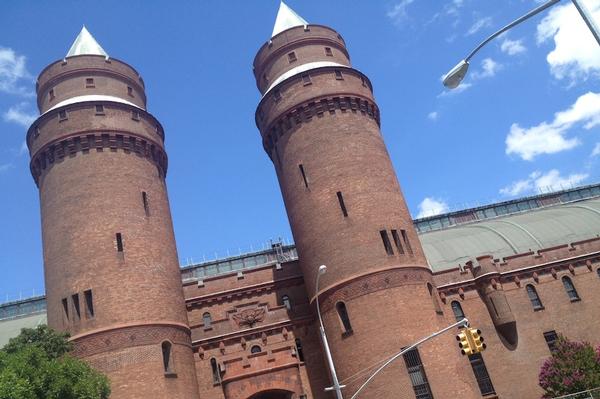
Jordan Moss
The Kingsbridge Armory
Whatever the reasons, the Kingsbridge Armory project marked the last major CBA campaign in New York City. When FreshDirect accepted $128 million in city and state subsidies in 2013 to relocate its headquarters from Queens to the Bronx, it never pursued a CBA. Similarly, Amazon’s 2018 plan to open a headquarters in Long Island City included promises of a new waterfront park and public school, but the company never sat down for negotiations with community groups, who swiftly moved to oppose the entire project.
Goldstein says that nationwide, many community groups have moved on from CBAs because they were tired of reinventing the wheel—“a strategic coalition does not want to negotiate a new agreement for every development project”—and have instead focused on citywide standards, like local hiring or living-wage requirements, that will apply to any major project seeking municipal funds or approval. “That’s not to say that there aren’t certain catalytic projects like arenas, all these soccer stadiums, where the project is big enough, it’s citywide, it’s visible, where a CBA might be worth working on,” he says.
It’s now common for proposed development subsidies to be scrutinized for their potential return on investment for local communities, Goldstein points out—something that was not the case in the days before CBAs. Amazon’s proposed Queens headquarters is a case in point, he says: “The debate that happened around Amazon is a direct result of the civic discourse that went on around these other projects.”
Of course, the Amazon project likewise foundered over concerns that the local community would be giving up too much for the promised benefits. With or without a formal CBA, the central dilemma remains: How much can neighborhood groups and city officials demand without developers walking away from a project?
At that point, the question becomes whether the benefits of new development are worth the costs. Even 15 years later, Blassingame still mourns the loss of the Bronx Terminal Market, which, though dilapidated, had become a mecca for both restaurants and Bronx residents to buy specialty foods that weren’t easy to find elsewhere, including at the bigger Hunts Point Market nearby.
“You go there on a Saturday, and you would see groups of people, especially immigrant Africans, would buy food like it was a coop,” she says. “These companies were there for 50 years or whatnot. So we just lost a lot as a community.”
She contrasts her experience with the Bronx Terminal Market and Yankees CBAs, which were arranged under Carrion, with an earlier fight over a new Bronx criminal court being built by the state, when Carrion’s predecessor as borough president, Freddy Ferrer, took advantage of a vote against the project by CB4 to push for community benefits. (Though, as Fairbanks notes, it took decades before a pedestrian plaza—one of the key concessions—was finally built.)
“He said, ‘Mary, thank you for the no vote. Now I have leverage,’” Blassingame recalls. For the Bronx Terminal Market battle, she believes, “If Freddy Ferrer was there, we would have had more negotiating. Not that it wouldn’t go down, but you would get more for the community.”
Have you been involved in a New York City development project where a community benefits agreement was signed or considered? We would like to hear from you. Contact us at cba@citylimits.flywheelstaging.com
This story was made possible through the generous support of the Fund for Investigative Journalism.



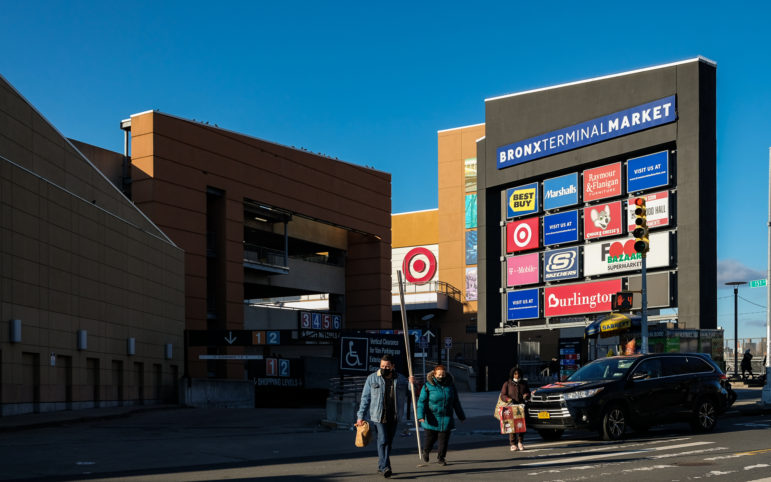
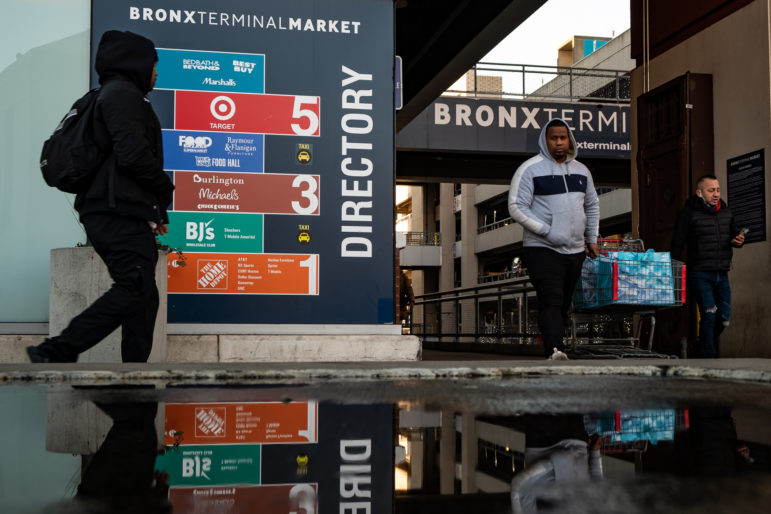
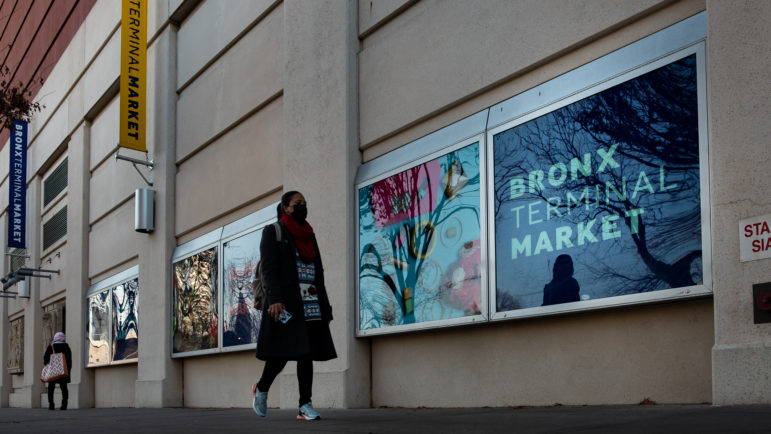







2 thoughts on “What Ever Happened to CBAs? The Rise and Fall of ‘Community Benefits Agreements’ in NYC”
hello world how are you all?
CBAs may have declined in New York City and throughout the country, but there is at least one exception here in New York City. The Morningside Heights Community Coalition (MHCC) has entered into a community benefits agreement with Union Theological Seminary (UTS), a progressive religious institution located in the northern end of Morningside Heights. UTS sold property and air rights to a private developer who is constructing a 42-story tower that will primarily be filled with luxury condominiums. MHCC had no legal leverage, as the tower could be built as-of-right under current zoning. Persistent advocacy failed to produce our primary goal of including affordable housing in the new development. But it did lead to a CBA, with $400,000 over 3 years going to the Morningside Heights Community Fund, located at the New York Community Trust. Jewish Theological Seminary (JTS) also has made voluntary contributions ($50,000/year for 5 years) to the Fund. To date $325,000 has been awarded to 26 Morningside Heights and West Harlem not-for-profits, including food pantries, after-school and senior programs, as well as groups advocating for social justice.